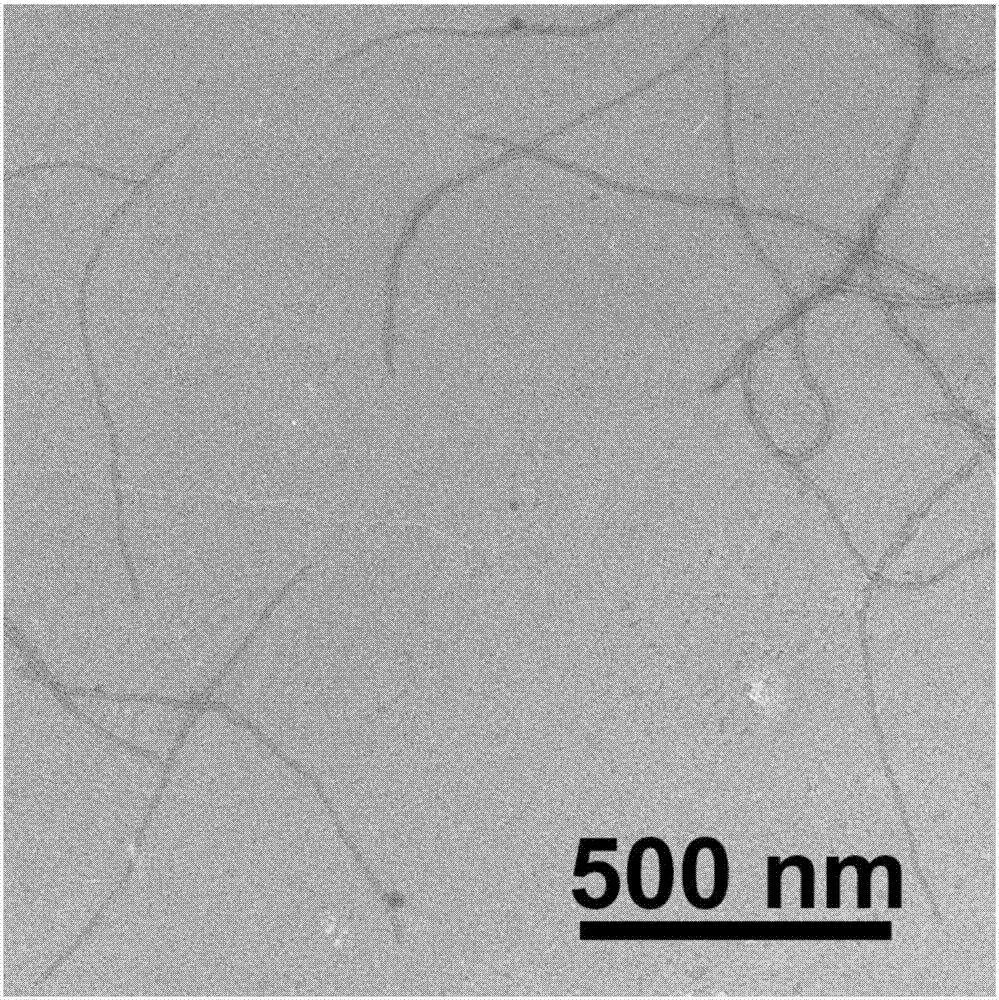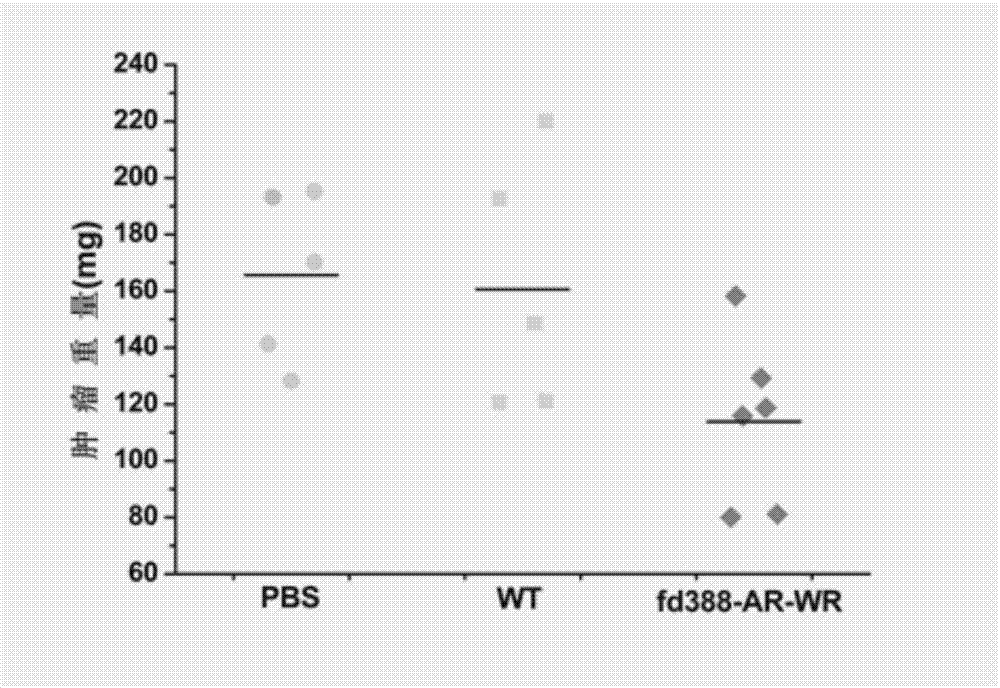Bifunctional phage and uses thereof
A bacteriophage, functional technology, applied in the field of nanomedicine, can solve the problems of displaying targeted functional peptides at the same time, untried and other problems, and achieve the effect of overcoming the lack of targeting and inhibiting the formation of new blood vessels
- Summary
- Abstract
- Description
- Claims
- Application Information
AI Technical Summary
Problems solved by technology
Method used
Image
Examples
Embodiment 1
[0015] 1. Biological panning:
[0016] 1.1. Use 0.1M NaHCO3 coating solution to dilute VEGF protein into four gradient concentrations of 20g / mL, 4g / mL, 0.8g / mL, and 0.16g / mL.
[0017] 1.2. Incubate 400 μL of protein solution with a concentration of 20 g / mL in a 24-well cell culture plate overnight at 4°C.
[0018] 1.3. Discard the protein solution, add 500 μL of 5 mg / mL BSA solution, block at 37°C for 2 hours; discard the blocking solution.
[0019] 1.4. Add 500 μL of 5% Tween-20 in PBST solution and incubate for 6 minutes, discard and repeat 6 times.
[0020] 1.5, will contain 10 10 400 μL PBS of the pfu phage library was added as input, blocked for 1 hour at 37°C, and the supernatant was discarded.
[0021] 1.6. Add 500 μL of 5% Tween-20 in PBST solution and incubate for 6 minutes, discard and repeat 6 times to wash away unbound and non-specifically bound phages.
[0022] 1.7. Add 400 μL of 0.1M HCl with pH=2.2 and incubate for 5-10 minutes to elute the specifically boun...
PUM
| Property | Measurement | Unit |
|---|---|---|
| diameter | aaaaa | aaaaa |
Abstract
Description
Claims
Application Information
 Login to View More
Login to View More - R&D
- Intellectual Property
- Life Sciences
- Materials
- Tech Scout
- Unparalleled Data Quality
- Higher Quality Content
- 60% Fewer Hallucinations
Browse by: Latest US Patents, China's latest patents, Technical Efficacy Thesaurus, Application Domain, Technology Topic, Popular Technical Reports.
© 2025 PatSnap. All rights reserved.Legal|Privacy policy|Modern Slavery Act Transparency Statement|Sitemap|About US| Contact US: help@patsnap.com



